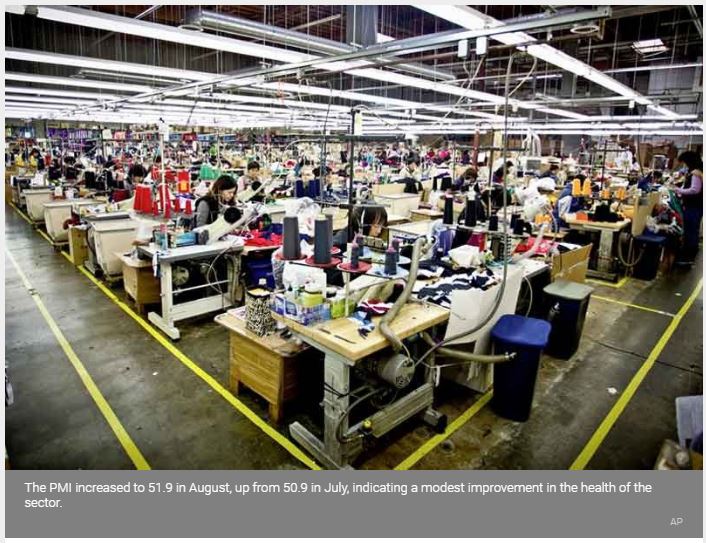Philippines: Manufacturing regains growth pace in Aug 2018
MANILA, Philippines — The country’s manufacturing sector regained its growth pace in August, driven by the surge in new orders which compensated for the softer rise in output, the latest Nikkei Philippines Manufacturing Purchasing Managers’ Index (PMI) showed.
The PMI increased to 51.9 in August, up from 50.9 in July, indicating a modest improvement in the health of the sector.
The PMI is derived from a survey of 450 manufacturing companies. A reading above 50 indicates an expansion compared to the previous month, while a reading below 50 represents a contraction.
“August data showed signs of improvement in client demand. Order book growth accelerated from a survey-record low in July and was solid overall,“ said IHS Markit, the firm that collated data for the PMI.
“However, survey details revealed that domestic markets were the primary driver of higher demand as export sales grew at a noticeably slower pace. Growth in export orders was the weakest in the current six-month period of expansion,“ it added.
The headline PMI provides a quick overview of the national performance in the manufacturing sector, drawing from questions on output, new orders, jobs, inventories and delivery times.
Despite firmer sales growth, IHS Marikit said production volumes increased at the slowest rate for nearly a year.
“An accumulation of finished goods inventories was a factor behind softer output growth, with firms reporting sufficient stocks to meet demand. Post-production stocks rose for a second straight month, with another solid rate of increase indicated,” IHS Marikit said.
Meanwhile, IHS Marikit said greater labor capacity enabled firms to work through their backlogs, with the level of unfinished business falling at the steepest rate for just over a year, extending the trend of lower backlogs to 30 months.
“Companies stepped up acquisitions of manufacturing inputs to meet greater operating demand, which contributed to another gain in pre-production stocks. Increased demand for inputs put pressure on supply chains, which saw vendor performance deteriorating in the middle of the third quarter,“ IHS Marikit said.
Firms cited other reasons for delivery delays, including inclement weather, supply shortages and poor traffic conditions.
In addition, Filipino manufacturers continued to face strong cost pressures.
“Input cost inflation remained sharp during August, partially reflecting the impact of the TRAIN Law rollout at the start of this year. Anecdotal evidence suggested that higher prices for raw materials and an unfavorable exchange rate also contributed to inflation,” IHS Marikit said.
Consequently, firms raised selling prices further to pass on higher costs to customers. Output prices increased at a marked pace.
Moreover, business confidence about output in the year ahead improved in August.
IHS Marikit principal economist Bernard Aw said while output growth eased, it was domestic demand-driven new business inflows that picked up pace in August.
Aw said job creation resumed after two months of lower employment and business confidence also improved.
“However, the improvement in the health of the manufacturing sector was marred by strong inflationary pressures,” he said.
Aw said Input cost inflation remained elevated and similar to recent months.
“With the indicators of price gauges remaining elevated, the August survey sends a hawkish message to policymakers,“ Aw said.
He cited that consumer inflation rose to 5.7 percent in July, with the central bank expecting a faster annual rate in August.
“According to the latest Nikkei survey, the TRAIN Law, higher prices for raw materials, and an unfavorable exchange rate all contributed to inflation,” Aw added.
Source: https://www.philstar.com/business/2018/09/04/1848363/manufacturing-regains-growth-pace-aug-2018#sa5I7oPFp5VRCpSM.99


 English
English




